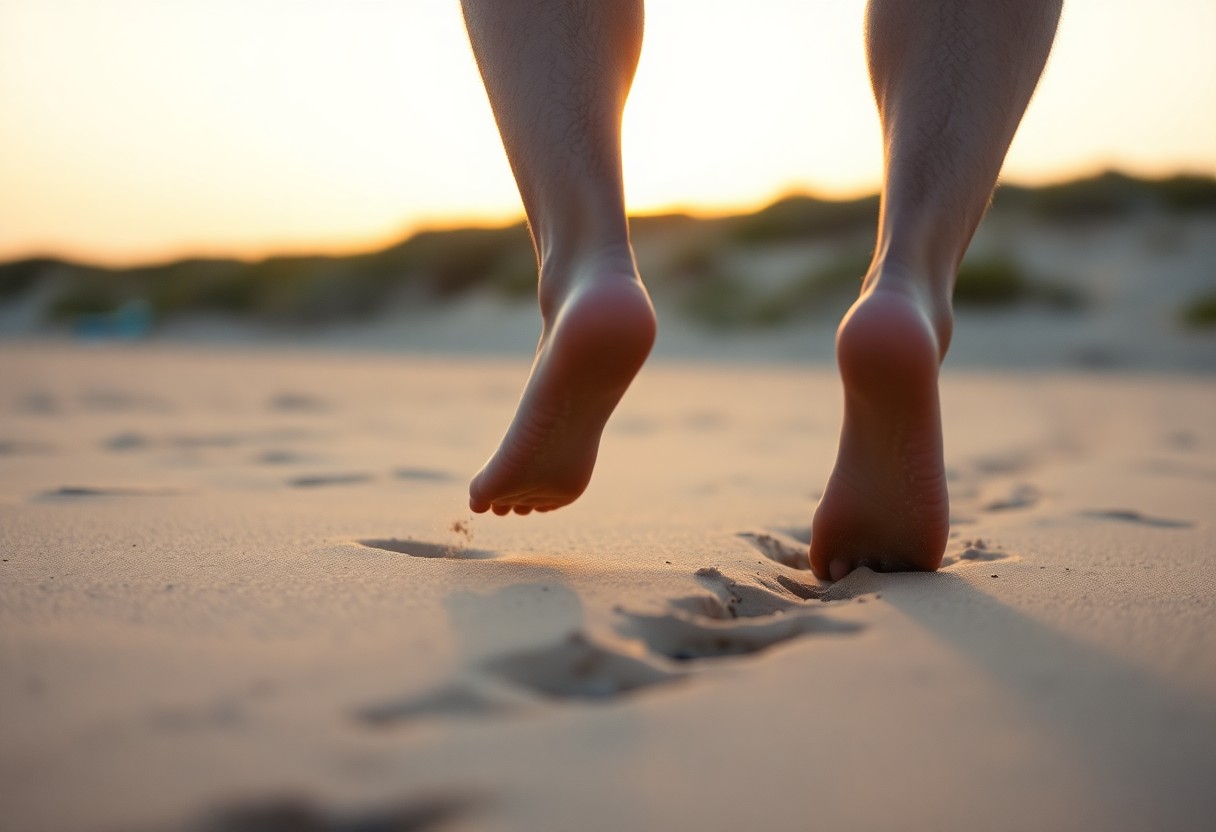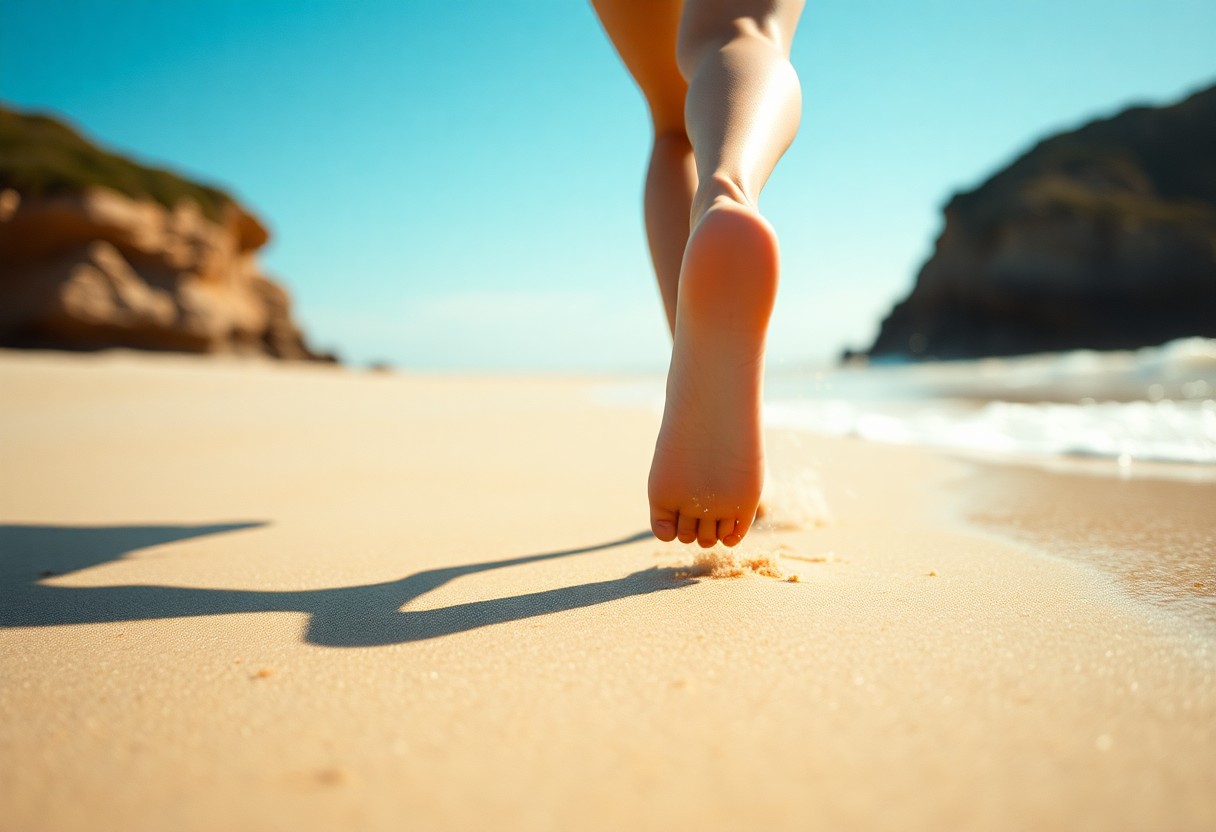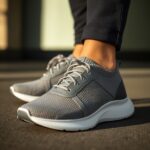When planning your next run, explore the revolutionary concept of barefoot running. This innovative approach not only helps to strengthen your feet and improve your overall posture, but it also significantly reduces the risk of common running injuries. By adopting a barefoot technique, you allow your toes to spread freely, which promotes a more natural gait and optimizes your footstrike. This natural movement pattern can lead to fewer injuries, resulting in a more efficient and enjoyable running experience.
Unlock the Life-Changing Benefits of Barefoot Running
Before diving into barefoot running, it's vital to understand the extensive benefits it can provide. Embracing this style can help you develop stronger feet and ankles, enhance your posture and balance, and drastically lower your chances of sustaining injuries. Running without shoes encourages a more natural running form, which can elevate your overall running efficiency and enjoyment. As you explore this new running style, consider how these advantages can transform not only your performance but also your overall well-being.
Strengthen Your Feet with the Power of Barefoot Running
Contrary to the common belief that shoes are necessary for support, running barefoot can actually enhance the strength of your feet and ankles. When you forgo shoes, you engage the muscles in your feet and legs more effectively, leading to increased strength and stability. This natural engagement improves your balance and posture, significantly reducing your risk of injuries and boosting your overall running performance. As you run, you'll notice how your body adapts and thrives without the constraints of traditional footwear.
Experience Enhanced Balance with Natural Toe Splay
Before embarking on your barefoot running journey, it's essential to recognize the importance of toe splay. Running without shoes allows your toes to spread naturally, significantly improving your balance and stability. This natural positioning can effectively reduce the risk of injuries and further enhance your overall running performance. Understanding how toe splay works is crucial for maximizing the benefits of this running style.
So, what happens when your toes are allowed to splay freely during barefoot running? This freedom improves your balance and stability by enabling your feet to function as they were designed to. The result is a lower risk of injuries and an overall boost in running performance. Embracing barefoot running offers an exhilarating sense of freedom and natural movement, allowing your toes to operate in their most natural state and enhancing your connection to the ground.

Enhance Your Running Form for Superior Performance
Every runner can benefit from refining their form, and barefoot running provides an exceptional opportunity to accomplish this. By removing your shoes, you can strengthen your feet, ankles, and calves while also improving your posture and balance. These enhancements work together to reduce your injury risk and transform you into a more efficient runner. As you fine-tune your form, you’ll discover how much more enjoyable and effective your runs can become.
Improve Your Footstrike with Barefoot Running Techniques
Running barefoot grants you superior control over your foot placement, allowing you to land gently on your forefoot or midfoot instead of striking the ground heel-first. This crucial adjustment can significantly reduce your risk of injury. By landing mid-strike or fore-strike without overstriding, your legs function like springs, resulting in an improved running form that promotes efficiency and power. Mastering these techniques can lead to a more enjoyable and safer running experience.
Boost Your Posture Through the Practice of Barefoot Running
Barefoot running is a powerful way to enhance your posture by enabling you to maintain a flat-footed stance that supports natural running form. Your feet are the foundation of your posture, and traditional shoes that restrict your toes and elevate your heels can negatively impact your balance and alignment. Understanding how barefoot running affects your posture is key to improving your overall running experience.
The benefits of barefoot running for posture are extensive. By running barefoot, you can strengthen your core and enhance your balance, both of which are essential for maintaining good posture while running. Additionally, this practice can alleviate stress on your joints, contributing to a more favorable alignment. As you transition to barefoot running, remember to listen to your body and gradually increase your distance and intensity to avoid any adverse effects on your joints or muscles.
Reduce Joint Stress Effectively Through Barefoot Running
While running is undoubtedly beneficial for your overall health, it can place considerable stress on your joints, especially when wearing traditional running shoes that feature excessive cushioning. Research shows that switching to barefoot running or barefoot shoes can help alleviate this stress by encouraging a forefoot or midfoot strike, effectively minimizing the impact on your joints. Understanding how to mitigate joint stress while running is crucial for long-term health.
Discover the Benefits of Reduced Joint Stress with Barefoot Running
The core of this advantage lies in how your foot strikes the ground during barefoot running. Without the excessive cushioning found in traditional footwear, your foot naturally absorbs impact, leading to a reduction in load on your knee joints and fostering a more efficient running form. This natural impact absorption is essential for maintaining joint health and enhancing your overall running experience.
Understand the Positive Effects of Barefoot Running on Joint Health
Runners who transition to barefoot running or barefoot shoes frequently report a significant decrease in joint pain and inflammation. This improvement is largely attributed to the promotion of a more natural stride and footstrike, which helps diminish stress and impact on your joints. Embracing barefoot running can be a game-changer for those looking to enhance their performance while preserving joint health.
Consider reducing joint stress by exploring barefoot running or barefoot shoes. Studies have shown that this running style strengthens your feet, ankles, and calves, leading to improved posture and a lower injury risk. By favoring a forefoot or midfoot strike, you can also significantly lessen the impact on your joints, helping you avoid joint pain and inflammation. As you contemplate transitioning to barefoot running or barefoot shoes, remember that a gradual approach is essential to allow your feet and joints to adapt to this new style of running.

Discover the Balance Offered by Barefoot Shoes
Barefoot shoes present an excellent compromise between the freedom of running barefoot and the protection afforded by traditional footwear. They allow you to enjoy the benefits of barefoot running while minimizing the potential risks associated with running without shoes. Understanding how barefoot shoes can enhance your running experience is crucial for making informed decisions about your footwear.
Experience the Comfort of Natural Foot Shape with Barefoot Shoes
In contrast to traditional shoe designs, barefoot shoes feature a wider, foot-shaped toe box that accommodates your toes' natural splay, promoting a more organic movement while running. This thoughtful design reduces pressure on your toes and significantly enhances balance. By providing ample space for your toes, barefoot shoes facilitate a more natural foot movement, which is essential for an enjoyable running experience.
Enjoy the Benefits of Zero-Drop Design and Enhanced Flexibility
The fundamental principle behind barefoot shoes is the zero-drop design, which means there is no height difference between the heel and toe. This encourages a more natural stride and reduces the risk of injury. Additionally, barefoot shoes offer greater flexibility, allowing your muscles, bones, and joints to move as nature intended. This flexibility is essential for fostering a more intuitive running style and enhancing overall performance.
It is crucial to recognize that the zero-drop feature and flexibility in barefoot shoes can effectively improve body alignment and reduce imbalances typically caused by traditional footwear with raised heels. With barefoot shoes, you can enjoy a natural running form, which leads to lower stress on your joints and an overall enhancement in performance. By incorporating barefoot shoes into your running routine, you can further strengthen your feet and elevate your overall running experience.

Maximize Your Running Experience with Barefoot Shoes
Barefoot shoes come with a host of benefits, including a more authentic running experience and improved foot strength. These advantages can lead to better balance and stability, ultimately reducing the risk of injury. Understanding these benefits is key to enhancing your overall running journey.
Embrace Natural Foot Support with Barefoot Shoes
By allowing your feet to function as they were designed, barefoot shoes with minimal arch support help to build foot strength, enabling your feet to act as their own support system. This is vital for enhancing posture and alleviating stress on joints. Stronger feet not only improve your running efficiency but also contribute to overall body strength and stability.
Experience the Connection with Protective Yet Thin Soles
The thin, protective soles of barefoot shoes maintain your connection with the ground, facilitating confident and powerful movements. Each foot contains approximately 200,000 nerve endings, enhancing your brain's control over your body's movements. This heightened awareness of ground contact is crucial for improving balance and agility while running.
It's important to emphasize that the thin soles of barefoot shoes allow for a more natural running experience. This design helps to reduce the collision forces associated with conventional running shoes, which can lead to fewer injuries and an improved overall running form. By prioritizing a natural running experience, you set the stage for enhanced performance and enjoyment in your runs.
Your Guide to Successfully Transitioning to Barefoot Shoes
Your journey into barefoot running begins with selecting the right footwear. However, it is crucial to do so safely to avoid any potential injuries. Highlighting the benefits of barefoot shoes, which closely mimic the experience of running barefoot, will help facilitate a smooth transition.
Embrace a Gradual Transition to Enjoy the Benefits of Barefoot Running
To initiate your transition, start by slowly increasing the duration you wear barefoot shoes. This gradual approach allows your feet to adapt to the new movement while strengthening your foot muscles over time. A thoughtful transition will help you reap the benefits of barefoot running without risking injury.
Mastering Proper Form for Long-Term Success
A critical element in the success of barefoot running lies in maintaining proper form. This includes landing mid-strike or fore-strike while avoiding overstriding, both of which can lower the risk of injuries and enhance your overall running experience. Focusing on form will allow you to enjoy the many benefits of barefoot running.
By maintaining correct form, you can fully enjoy the benefits of barefoot running, such as stronger feet and better posture, while minimizing the risks associated with this running style, including joint stress. By prioritizing proper form and gradually transitioning to barefoot shoes, you'll pave the way for long-term success and a more enjoyable running experience.
Recap: Key Advantages of Embracing Barefoot Running
With this comprehensive overview, you now have a solid understanding of the myriad benefits associated with barefoot running. By eliminating your shoes, you can enhance your foot strength, improve your balance, and optimize your posture. An improved footstrike and reduced joint stress will contribute to a more natural and satisfying running journey. If running barefoot isn't feasible, consider trying barefoot shoes to experience the advantages firsthand.
Your Questions Answered: Comprehensive FAQ on Barefoot Running
Q: What are the main advantages of barefoot running?
A: The benefits of barefoot running include the strengthening of your feet, ankles, and calves, improved balance and stability, and a lower risk of injuries. It promotes a more natural movement pattern and enhances your posture. Additionally, barefoot running helps reduce joint stress and encourages a more natural footstrike, all contributing to a more rewarding running experience.
Q: Can I enjoy the benefits of barefoot running while wearing shoes?
A: Absolutely! You can experience the advantages of barefoot running by opting for barefoot shoes. These innovative shoes are designed to replicate the sensation of running barefoot while providing essential protection. They feature a natural-foot shape, zero-drop design, flexibility, and natural foot support, which can enhance your running form and lower injury risks.
Q: What is the best way to transition to barefoot running or barefoot shoes?
A: Transitioning to barefoot running or barefoot shoes requires a gradual approach. Start by integrating barefoot shoes into your routine, slowly increasing the time you wear them. Focus on maintaining proper form and technique to ensure long-term success. Begin with short runs or walking sessions in barefoot shoes, and progressively extend the distance and intensity over time to allow your body to adapt.
The Article The Surprising Benefits of Barefoot Running: Why You Should Give It a Try appeared first on My Shoes Finder
The Article Barefoot Running Benefits: Discover Why You Should Try It Was Found On https://limitsofstrategy.com







I’ve been intrigued by barefoot running for a while now! I started easing into it last summer, and it really changed the way I approach my runs. The connection to the ground feels so different, and I’ve noticed my balance has improved significantly. Plus, it forces you to be more mindful of your form—I’m definitely more aware of my stride and foot placement.
It’s really interesting to hear how barefoot running has shifted your perspective on your runs. That connection to the ground can definitely change the way you experience the environment while you’re running. I remember when I first started running with minimal footwear; it was eye-opening to feel every little detail of the ground beneath me. It really encourages a more natural, instinctual rhythm, doesn’t it?
I appreciate your insights on barefoot running and its potential benefits. I started experimenting with this approach last year, and I’ve noticed a significant improvement in my foot strength and overall running form. It feels liberating to run without the constraints of traditional footwear, and I’ve found that my balance has improved too.